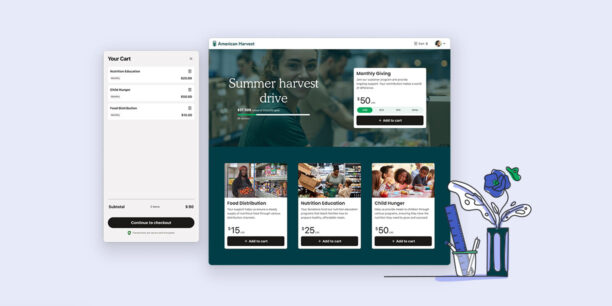NEW STUDY: Donors Don’t Want a Reward for Their Donation

Request a Demo
Learn how top nonprofits use Classy to power their fundraising.
“Thank you for not smoking”
versus
“NO SMOKING”
Both messages mean the same thing: it is not acceptable to smoke here. But these statements create a very different, distinct tone.
The way you frame a question or statement has a huge impact on the response you receive. Nonprofit professionals are usually aware of this when crafting an appeal, but new research from Stanford University offers actionable evidence on how best to frame your ask.
The Experiments
Professor Dale T. Miller and PhD student Julian Zlatev performed a series of experiments with 1,297 participants, putting them in hypothetical giving situations. Two of the situations they posed to subjects involved combining a charitable act with a personal benefit.
In the first iteration, people had the opportunity to buy a product, from which a portion of the proceeds would go to charity. Another option was for the participant to receive a gift in exchange for making a donation.
In both situations, the donor would receive some item and the charity would receive a donation. The framing of the transaction, however, garnered noticeably different responses.
“People were more likely to donate and give more when the transaction was framed as an exchange in which a portion of the sales from the item they purchased benefitted the nonprofit,” Miller explained in an article for the Stanford Graduate School of Business.
Put simply, people would rather buy a product to benefit charity than to receive a product in exchange for donation.
What’s the Difference?
The authors theorize that the preference stems from how the donor categorizes the transaction. When people think about buying a product to benefit charity, they categorize it as a purchase with a bonus. They are buying something (a thing we all do frequently), but in addition, they are helping a charity. The other option is framed as a charitable gift, but it is tainted by the promise of a reward. The first seems like an enhanced version of a purchase, but the second is seen as a lesser version of donation.
We already know that the public has a strong aversion to “tainted altruism”. People want their nonprofits and charitable actions to be pure and unadulterated. This is why so many donors are bothered by the thought of overhead and high pay for nonprofit executives. Miller cites past research and points out that “people were opposed to a nonprofit hiring a highly-paid executive, even if it would help the nonprofit raise more money to fulfill its mission.”
Perhaps this has contributed to the emergence of B corps (Benefit Corporations, which aim to combine profitable business with social good). People want to make positive change, but they don’t want to make the financial sacrifice that often comes with nonprofit work.
So What Do We Do About It?
This research points toward some practical actions for nonprofits to maximize donations.
• Don’t Offer a Gift or Reward in Exchange for Donations
Clearly donors don’t like the idea of donating for a reward. It makes the action feel less genuine and generous. Furthermore, many donors will feel their donation is less impactful because it also pays for a gift.
• Bake Sales Might Not Be a Bad Idea
You don’t have to sell only baked goods. Selling handmade or donated items is also great way of fundraising. Ultimately, it’s the same as offering a reward, but by framing it as a purchase, you may be more successful.
• Find For-Profit Partners
Another option to tap into people’s willingness to buy for a good cause, is to partner with a restaurant or retailer. Having a day where some portion of sales goes to your nonprofit also takes the onus of organizing and running a sale off of the nonprofit.
Psychologists, sociologists, and economists continue to pursue research on how and why people choose to give. While it sometimes confirms what may seem intuitive, individual studies still cast light on the best ways to convert donors. Great fundraisers are always learning, so keep an eye on the Classy blog for the latest research on philanthropy and why people give!

The Pocket Guide to Fundraising Psychology
Subscribe to the Classy Blog
Get the latest fundraising tips, trends, and ideas in your inbox.
Thank you for subscribing
You signed up for emails from Classy
Request a Demo
Learn how top nonprofits use Classy to power their fundraising.
 Explore Classy.org
Explore Classy.org 

